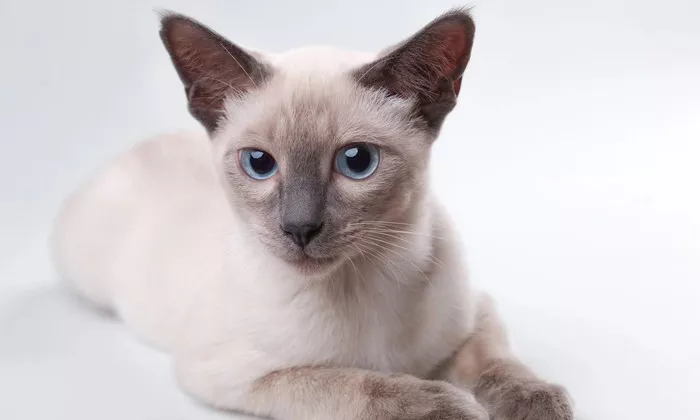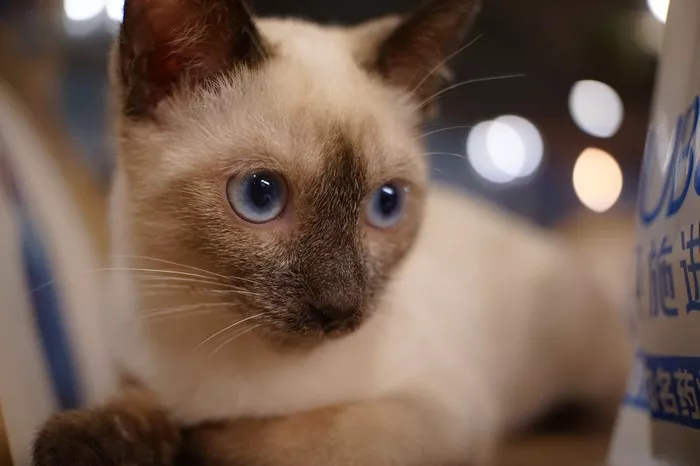Siamese cats are renowned for their striking appearance, vocal nature, and an unparalleled level of affection towards their human companions. One common question that arises in the minds of Siamese cat owners and enthusiasts is whether Siamese cats truly enjoy being held. In this comprehensive exploration, we delve into the intricate world of Siamese cat behavior, deciphering the signals they exhibit, and understanding the factors that influence their preference for being cradled in the arms of their beloved humans.
The Siamese Personality
Siamese cats are not your ordinary feline companions. Originating from Thailand, formerly known as Siam, these cats have a distinct appearance characterized by striking blue almond-shaped eyes, large ears, and a short coat with color points, darker shades on the ears, face, paws, and tail. Beyond their physical attributes, Siamese cats are celebrated for their vocalizations, social nature, and a deep-seated bond with their human families.
Vocalization:
Siamese cats are often described as “talkative” or “chatty.” They utilize a range of vocalizations, from soft purring to loud meowing, to communicate their needs, desires, and emotions. This unique trait contributes to the strong connection they form with their human companions.
Social Nature:
Siamese cats thrive on human interaction. They are known for being affectionate, seeking out their owners for companionship, and often choosing a favorite family member with whom they form an exceptionally close bond.
Playful and Energetic:
Siamese cats are highly intelligent and require mental and physical stimulation. They enjoy interactive play, climbing, and exploring their environment. Engaging with them in play activities is essential for their well-being.
Do Siamese Cats Like to Be Held?
The question of whether Siamese cats enjoy being held is multifaceted and depends on various factors, including the individual cat’s personality, early experiences with handling, and the quality of the bond they share with their owners.
Factors Influencing Siamese Cats’ Preference for Being Held:
Socialization:
Siamese cats that receive positive socialization from an early age are more likely to be comfortable with human touch, including being held.
Cats exposed to various handling experiences during kittenhood are generally more accepting of being held as adults.
Bond with the Owner:
The strength of the bond between a Siamese cat and its owner plays a crucial role in their receptiveness to being held.
Cats that trust and feel secure with their owners are more likely to enjoy the close contact of being held.
Individual Personality:
Like humans, each Siamese cat has a unique personality. Some may be naturally more inclined to seek physical closeness, while others may prefer more independence.
Observing the cat’s body language and responses provides insights into their individual preferences.
Comfort and Trust:
Siamese cats thrive in environments where they feel safe and secure. Creating a comfortable space for them and allowing them to initiate contact fosters trust.
Gradual and positive exposure to being held, accompanied by treats and soothing words, can enhance their comfort.
Signs of Enjoyment and Discomfort:
Enjoyment:
Purring: A content and relaxed Siamese cat often purrs when being held.
Kneading: Gentle kneading with their paws indicates comfort and contentment.
Relaxed Body Language: A cat that enjoys being held will exhibit a relaxed posture with no signs of tension.
Discomfort:
Vocalization: Excessive meowing or vocalization may indicate discomfort or a desire to be released.
Tail Flicking or Lashing: Agitated tail movements suggest discomfort or overstimulation.
Attempted Escape: If a Siamese cat tries to wiggle out of your grasp, it’s essential to respect their wish for independence.
Tips for Holding Your Siamese Cat:
Start Early:
Introduce handling and being held during the kitten stage to acclimate them to human touch.
Positive Reinforcement:
Use treats, gentle strokes, and soothing words to create positive associations with being held.
Respect Their Limits:
Pay attention to your cat’s body language, and if they show signs of discomfort, allow them to return to solid ground.
Comfortable Environment:
Choose a quiet and comfortable space for holding your Siamese cat, minimizing potential stressors.
Short Sessions:
Begin with short holding sessions and gradually extend the duration as your cat becomes more accustomed.
Bonding Time:
Use holding time as an opportunity to strengthen the bond between you and your Siamese cat.
Conclusion:
While the inclination of Siamese cats to enjoy being held varies from one individual to another, the key lies in fostering a trusting and affectionate relationship. Paying attention to their cues, respecting their boundaries, and incorporating positive experiences cancreate a harmonious environment where being held becomes a cherished activity for both the Siamese cat and their owner. Understanding the intricacies of Siamese behavior is the first step towards building a lifelong connection filled with mutual love and companionship.











![Do Birman Cats Like to Cuddle? [Revealed!]](https://www.catsmeowweb.com/wp-content/uploads/2023/06/burmese-cat-24.webp)














